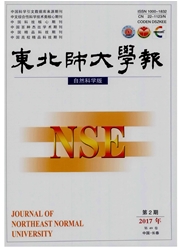

 中文摘要:
中文摘要:
在SBR反应器内接种好氧颗粒污泥,经驯化后对人工模拟废水的处理效果良好。考察了培养过程中污泥形态的变化以及发生丝状菌污泥膨胀时反应器对污染物的去除效果,并探讨了丝状菌在污泥颗粒化过程中的作用以及控制丝状菌污泥膨胀的方法。结果表明,丝状菌污泥膨胀对COD的去除率有影响,但对去除NH3-N、TP的效果影响不大。通过增加反应器内的水力剪切力对控制丝状菌污泥膨胀有一定的效果,而减小C/N值,均衡进水中的营养可从根本上解决污泥膨胀问题。成熟的好氧颗粒污泥的MLSS约为3000mg/L,沉降性能较好,SVI为77mL/g;对COD、NH3-N、TP均具有较高的去除率,分别达到94.52%、95%、90%左右。
 英文摘要:
英文摘要:
The aerobic granular sludge was inoculated in SBR and used to treat simulated wastewater after acclimation, with an excellent effect. The variation in sludge morphology during incubation and the removal of pollutants with filamentous sludge bulking were investigated. The role of filamen- tous microorganisms in the sludge granulation process and control methods of general filamentous bulking were discussed. The filamentous sludge bulking affected the removal rate of COD, but the influence on the removal rates of ammonia nitrogen and TP was little. The filamentous sludge bulking could be controlled to a certain extent by increasing the hydraulic shear in the reactor. Moreover, the problem of sludge bulking could be fundamentally resolved by reducing the ratio of C/N and balancing nutrition in the influent. MLSS of the mature aerobic granular sludge was about 3 000 mg/L with better settleability, and SV1 was about 77 mL/g. The removal rates of COD, ammonia nitrogen and TP could reach 94.52%, 95% and 90% respectively, showing higher removal rates.
 同期刊论文项目
同期刊论文项目
 同项目期刊论文
同项目期刊论文
 Stability of nano-sized titanium dioxide in an aqueous environment: effects of pH, dissolved organic
Stability of nano-sized titanium dioxide in an aqueous environment: effects of pH, dissolved organic Effects of nanosized titanium dioxide on the physicochemical stability of activated sludge flocs usi
Effects of nanosized titanium dioxide on the physicochemical stability of activated sludge flocs usi The impact of titanium dioxide nanoparticles on biological nitrogen removal from wastewater and bact
The impact of titanium dioxide nanoparticles on biological nitrogen removal from wastewater and bact 期刊信息
期刊信息
